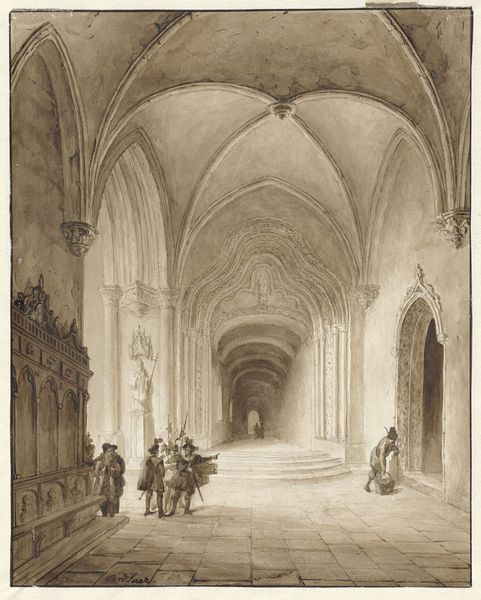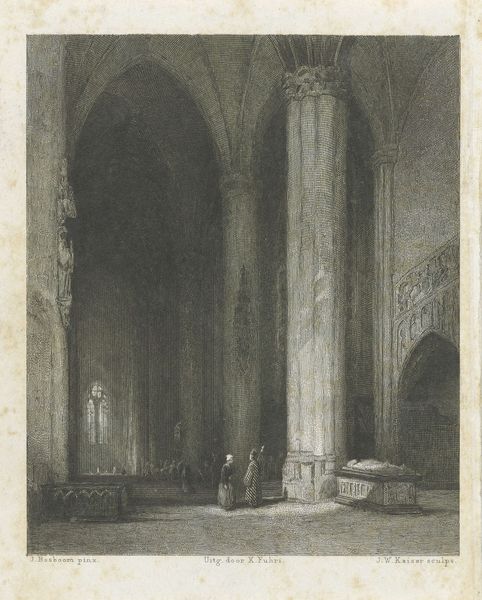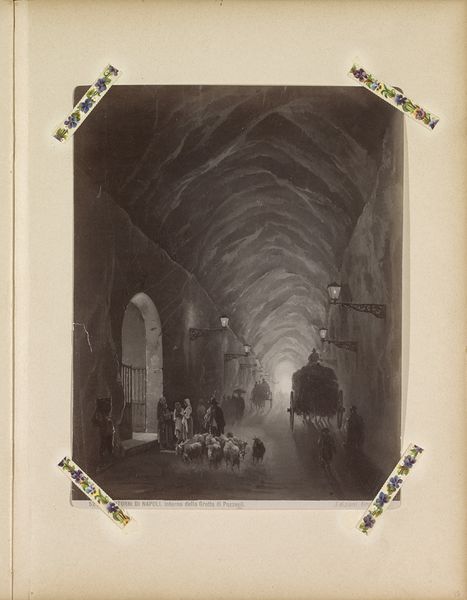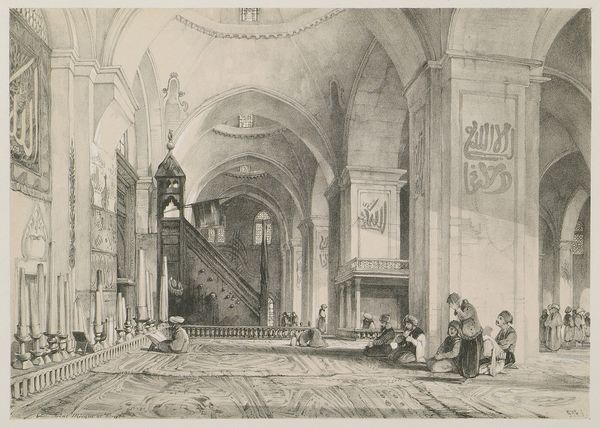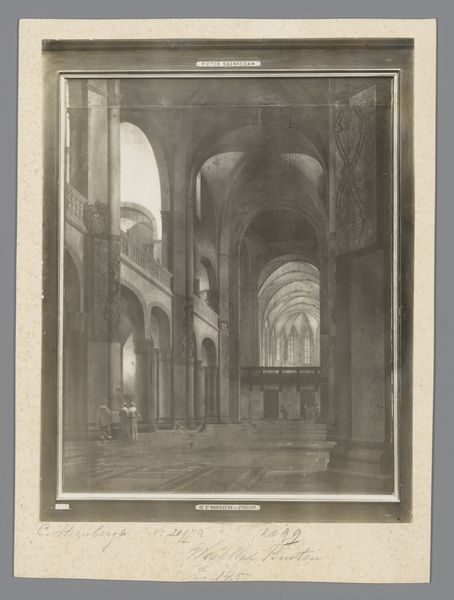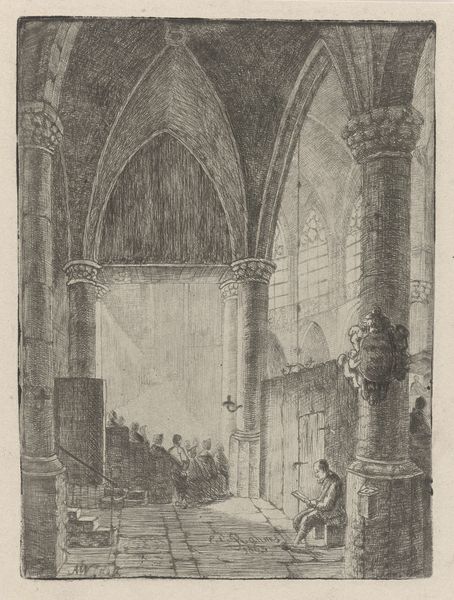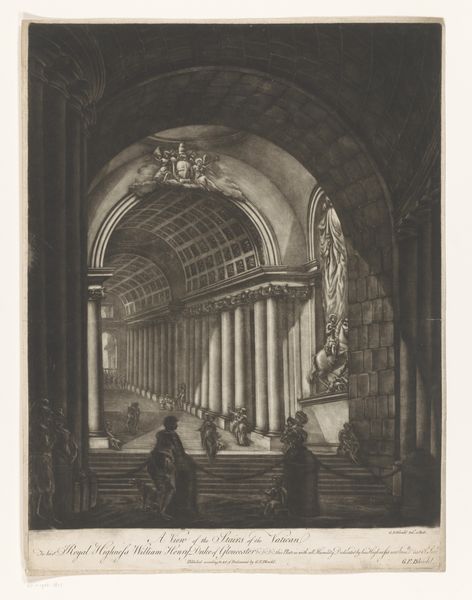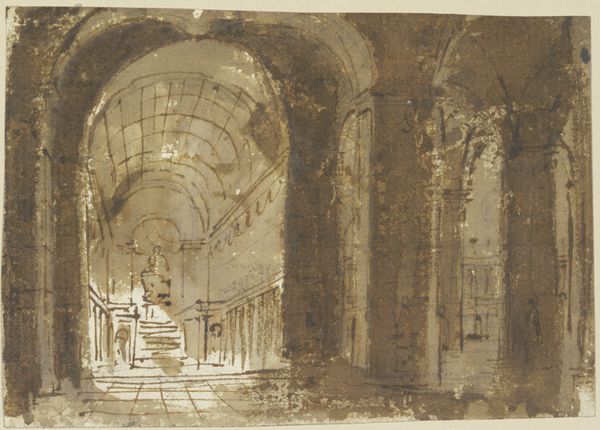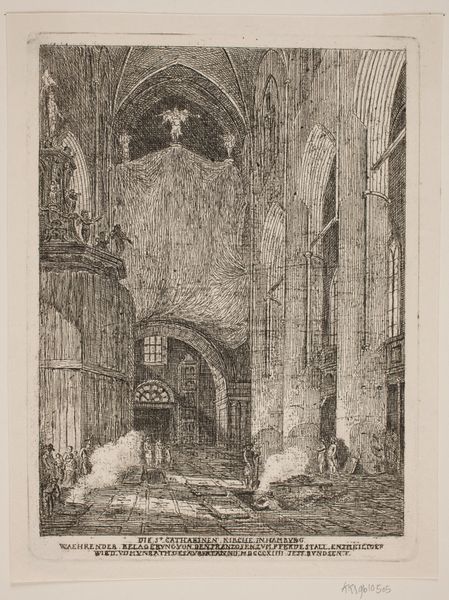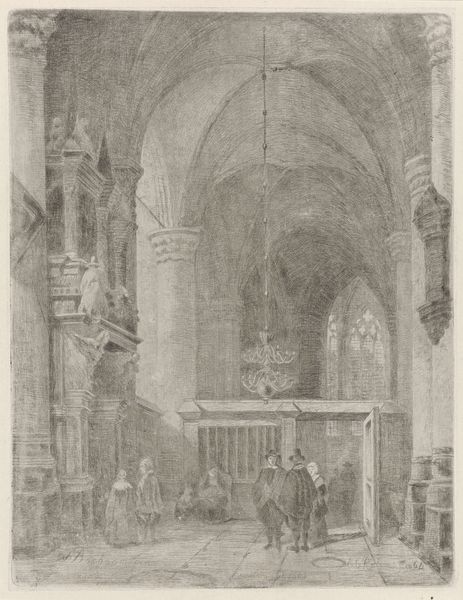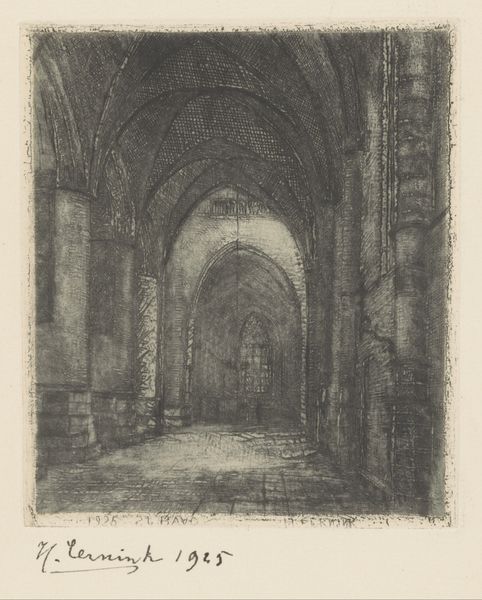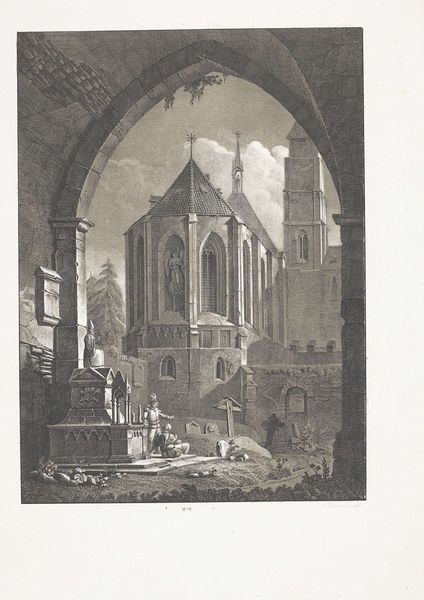
photography, charcoal
#
landscape
#
charcoal drawing
#
photography
#
photojournalism
#
orientalism
#
surrealism
#
genre-painting
#
charcoal
#
realism
Dimensions: height 252 mm, width 200 mm, height 309 mm, width 507 mm
Copyright: Rijks Museum: Open Domain
Curator: The sepia tones and theatrical lighting in this photograph, "1141 Piedigrotta Napoli" by Giorgio Sommer, transport me. It dates from somewhere between 1893 and 1903. Editor: It’s… cavernous. The sheer scale and the way the light seems to emanate from a distant point give it a sense of forced perspective, almost as if everyone's converging on the light. What was Sommer aiming for here? Curator: Consider Naples during that period—a society grappling with massive economic disparity. Sommer, catering to the burgeoning tourist industry, was actively constructing a narrative about Italy through photography. The photograph itself is a manipulation of charcoal drawings. Look closely, and you'll see the drawn-in people. Editor: Right, so the labour went into constructing the *idea* of a place. But this feels performative, a kind of social tourism for consumption, with its implied division between the viewers and the observed, the tourist versus those that they tour through. It’s perpetuating certain gazes… Curator: Exactly. It reflects how commercial photography blurred boundaries by turning lived reality into constructed images that bolstered power dynamics. The actual manufacturing of the image required labour: gathering models, processing chemicals, and selling prints to the privileged class, of course. Editor: And, what of those models? These folks aren’t generic subjects. The inclusion of armed men, for example, or groups being watched… all have cultural roots that affect the distribution of representation of Italian national identity at the time. It asks whose lives, labors, and social realities are legitimized through images like these? Curator: We see these themes reflected across the photographer's entire body of work— always asking us to think critically about the visual representation of cultures, especially the artist's means and material impact in creating such a constructed sense of place. Editor: Right. This isn't a window into history; it is a very constructed scene, a product intended for sale and consumption. It challenges us to consider what power structures it affirms and which it possibly obscures.
Comments
No comments
Be the first to comment and join the conversation on the ultimate creative platform.
